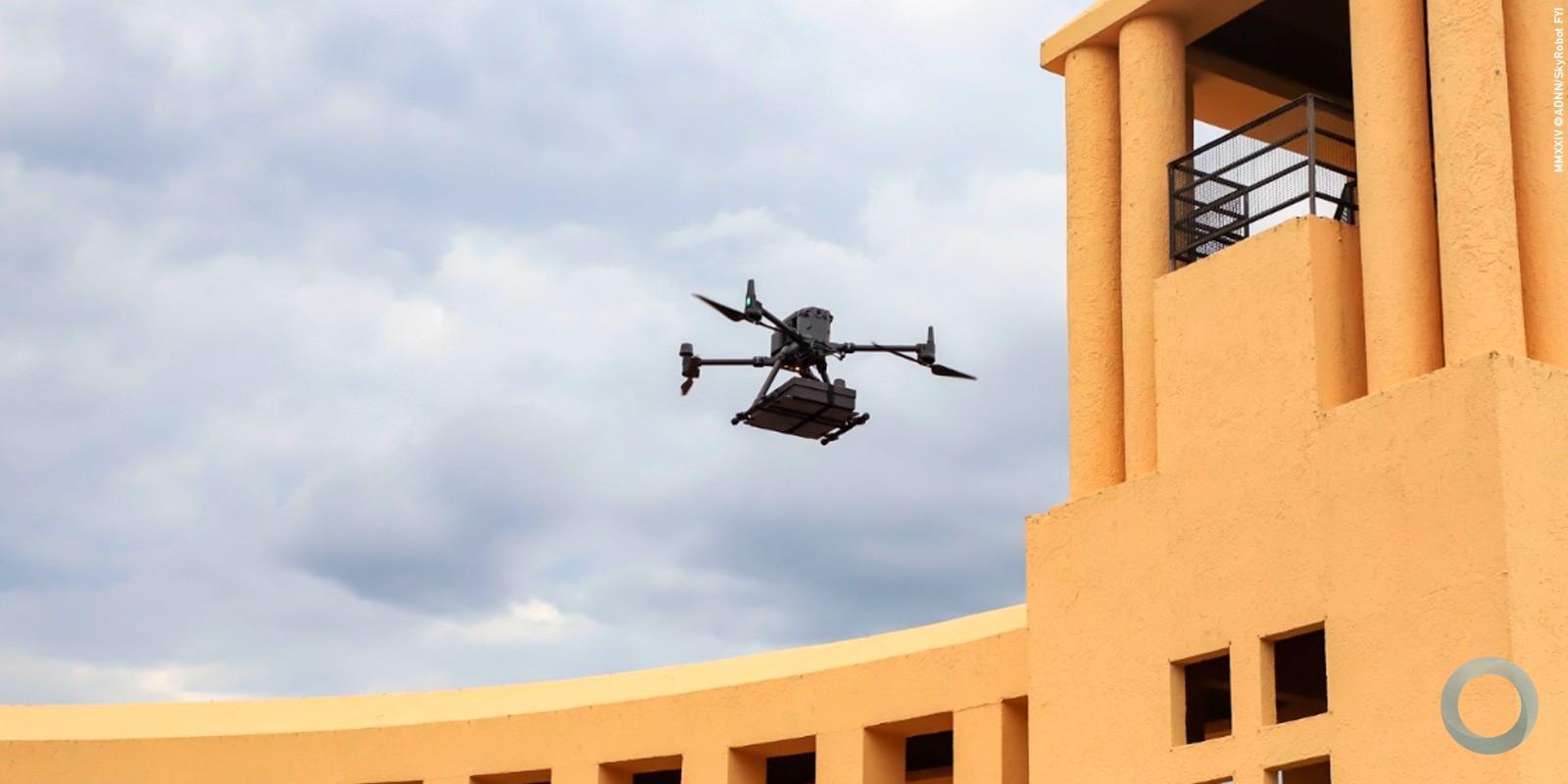Note DefesaNet
Text in Portuguese
DEFESA NACIONAL – Verdade nua e crua Link
O editor
Cosme Degenar Drumond
Special for DefesaNet
degenar@terra.com.br
Translation Nicholle Murmel
At a certain point in its history, every nation pools up resources to build defense capabilities and integrate them to the chain of national development. Society establishes what the political terms are, the scientific community researches for technological knowledge, industry provides the materials and systems needed and the government manages the entire process. Defense is defined by the nation’s economic, social, political end technological ambitions.
The first great Brazilian effort towards building a comprehensive defense structure happened through the hands of prince-regent D. João VI, as soon as the Portuguese Royal Family arrived in Brazil, escaping from Napoleon troops, then a colony, in 1808. Throughout the years, however, the Estate did not improve its means. During the Paraguay War (1865-1870), we had to ask England to help equipping our Navy and our Army – which cost the Brazilian Crown eleven times the imperial budget in the year of 1864.
Almost a century later, in World War II, once again Brazil took foreign help to fight against the Axis. Defense materials’ production in the country didn’t move forward. Even the uniform items provided to our soldiers war poorly crafted. Brazilian Air Force pilots and mechanics stationed in Italy preferred to wear American clothes and gear. The Fighters Squad commander felt embarrassed while distributing Brazilian-made uniform pieces to his subordinates.
The fabric-saving in those uniforms was so extreme, that taller soldiers wound up with their shins uncovered due to shorter pants. The company responsible for making boots for our “pracinhas” (how Brazilian WWII soldiers were called) replaced the rubber at the bottom of the shoes with a different material that became soaking wet when the men walked through mud, causing a lot of them to fall sick with influenza. Those poorly made shoes were replaced by the American “soldier boots”. Not to mention our troops had to put up with old and obsolete vehicles having constant breakdowns. Brazilian soldiers waged their own war against bad logistics, as proven by official reports issued at the time.
During the years of military government (1964-1984), Brazilian defense industry evolved in terms of workforce qualification and production quality, under the guidance of technological research centers. There was good impact on our trade balance at the time. But the government didn’t have enough money to supply its military with fuel and food for the troops. On a display of vexation with such dire conditions, a commander suggested in public that his unit should be shut down.
The weight of this contempt regarding national defense fell on the industry. We lost a good deal of the qualification and know-how we had acquired before, particularly in the aerospace field. “Brazil became the ‘nation of the future’, with all these fantastic plans, patriotic wishes, big budgets and strategic decisions, all to come true in the years to come”, says a friend remembering that time. Without a guiding plan that could passed unharmed through each president and its particular administration, the country was under no risk of actually getting something done right, or getting something done at all.
Truth is, building and maintaining national defense is not an easy task, not cheap either. It’s about establishing government policies and putting all means, knowledge, technology, products, markets and industry together to work. The Administration is supposed to manage and improve a nation. Searching for technological independence is essential, and must be supported by research and proper funding. State-run industry should manufacture whatever goods private factories won’t for technical, commercial, political or strategic reasons. Foreign aggressions towards Brazil in the past and even recently show how important it is for us to have a fully functional national defense structure.
Brand new defense
A new paradigm for defense was launched in Brazil in December 2008: the National Defense Strategy (Estrategia Nacional de Defesa – END in Portuguese). It is comprised of plans, goals and schedules for short, medium and long-term projects. Society has debated these new guidelines through seminars, workshops and committees.
Industry representatives were instructed to bring lost capacities back. The damage caused by stagnation was great and fixing it demanded even greater funding. Brazil traditionally invests very little in defense – less than 1,5% of its GDP. However, in order to support ongoing hi-tech military programs, in recent years the country has spent billions of Reais. It must invest a lot more to actually become able to design indigenous technological solutions.
In October 2008, former minister Roberto Mangabeira Unger, one of the minds behind the END, pointed during a meeting with industry representatives that rebuilding national defense demands close surveillance, mobility and military presence. Surveillance means to know what happens at our borders, in our territorial waters and our airspace – industry must provide technological support. Military presence is valuable when combined with surveillance and mobility. Mobility isn’t just a matter of technology; it’s a matter of doctrine and personnel qualification.
Brazil still doesn’t own cutting-edge technology to monitor key-points in its territory, despite having the basic components, engineering capabilities and talented personnel for it. The former minister talked about that, too. The GPS technology we use, for instance, relies completely on foreign satellites that can be shut down at any moment, leaving us literally lost. Such gadgets and the means to take them to space are out of reach for our industry at the moment. Political proficiency and proper funding are essential to turn this reality around.
Brazilian industry has earned legal support and special taxes regime, which allow manufacturers to plan further ahead. The major issue is to ensure State orders and get paid for them in time, without running the risk of curtailment. The activity of small technology companies is still inexpressive, but it must be protected and encouraged. “There’s no more room for fiscal demagogy and for the government to pretend to stimulate industry, and industry, on the other hand, pretend that’s enough”, says another source.
The concepts of “strategic companies” and “strategic programs” were introduced with a thunder along with the END, and resulted in a government bill that establishes these concepts as competitiveness attributes for companies planning to do business with Brasilia. Currently there are over 50 strategic companies.
Another issue worth mentioning are the so-called “opportunity purchases”. They work as a quick remedy, but also hinder the process of achieving our technological independence, though the Ministry of Defense works to prevent random acquisition programs.
Brazilian export financing agency APEX/MDIC has been providing resources to fund companies exhibiting their products in expositions around the world, under the pretense of helping to promote Brazilian products and foment new partnerships. Promoting our merchandise is vital. The problem is that taking part in such big events consumes a lot of money and our companies must carefully consider the balance between costs and benefits of participating in each show.
The main focus should be research and production. Companies that take part in exhibitions abroad are always practically the same, and some of them already have a privileged spot in international markets. APEX’s initiative is not compatible with the reality. Companies, especially small and medium ones, can’t even sell in the Brazilian market yet.
An example of how the END is actually being implemented is the Inova Aerodefesa program, created by State-run agency FINEP in 2013. Companies that took part in the initiative informed that now they are going through financial problems because the funding release by FINEP is not yet according to the current defense law. They had to invest their own money do modernize their facilities. The most reasonable option from a commercial perspective is for Brazilian companies to go after foreign partners. For instance, Russia helped to develop defense projects in India, though it was for political and strategic reasons, not commercial.
Most of the relevant technologies are controlled by a handful of global companies. There’s dissatisfaction with the current rules for industrial property and copyright. Generally speaking, nations that want to oppose the rules don’t have the power to do so, and nations that have power won’t oppose the rules.
The countries that have power and an opposing nature are usually the ones that need those key-technologies the most. Science and innovation can be conducted by top civilian and military institutions. At some point industry becomes part of the process as well. But in order to prevent funding shortage on the final stages of technology development and pre-production, analysts suggest the creation of some sort of technology transfer guarantee fund.
There are those who prefer European partners and emerging industries. In the end of 2012, Brazilian representatives of industry and government went to Washington to discuss a potential alliance. The Brazilian party presented our industrial capabilities at the Chamber of Commerce, and the goal was to find out how both countries could contribute and benefit.
Washington knows that Brazil needs advanced technology, so the remaining questions were: what could we transfer back to the Americans? How do we receive cutting-edge knowledge without clashing with United States’ mighty laws? How the Brazilian market would respond to American defense companies coming to our land?
The cost of defense projects
The main focus of the Brazilian Navy in the recent years is to protect our maritime resources. The area known as “Blue Amazon” holds a large piece of our GDP and the source of income of thousands of Brazilians. Within the approximately 1,54 square mile region there are oil reserves estimated around 15 billion barrels. By 2020, these reserves will be worth about 7 trillion dollars according to official data.
Our Navy needs to know what happens in our waters, keeping an eye on each scenario and supporting crime-fight operations in our sea and our rivers. In order to achieve readiness, the Force gathered more than 200 subproject under seven main branches: Nuclear, Naval Power, Blue Amazon Surveillance (SisGAAz) , 2nd Fleet and 2nd Marine Corps Naval Complex, Workforce, Navigation Safety and Operational Capability Recovery.
The Brazilian Army went through a transformation as well. In order to adapt its capabilities to the age of knowledge, it also chose its top seven strategic projects: borders surveillance (SISFRON), strategic ground structures protection (PROTEGER), developing a new line of armored vehicles (GUARANI), anti-aircraft defense systems, currently outdated, the Astros 2020 project for deterrence, cyber defense and also recovering operational capabilities (RECOP).
The SISFRON program is expected to be completed by 2025, at an overall cost of 12 billion reais. Many criminal activities happen at Brazilian borders, such as drugs and arms traffic. According to 2010 data, the amount of taxpayers’ money spent to contain violence all over the country was around R$180 billion, of which $40 billion were investing on fighting drug traffic. If the government doesn’t treat crime prevention (border surveillance included) as a priority, it’s bound to spend a lot more to mend the damage caused by crime and violence.
Cyber defense is also an extremely important strategic area. In 2015 around R$ 248 million should be invested, with R$209 million more waiting in line. The ASTROS 2020 should receive R$ 687 million for its development and R$ 689,4 million for its conclusion.
The government is expected to invest R$3.8 billion on the Army’s anti-aircraft program by 2030. The GUARANI armored vehicle line should receive R$618 million by the end of the year and R$ 14 billion more by the project’s conclusion in 2035.
The RECOP program has already spent R$ 2billion, R$170 million will be invested this year, and R$ 9 billion more until its conclusion in 2022. The PROTEGER initiative will cost R$ 11 billion by 2029. All subprojects included in these main braches aim to renovate equipment, create technology, restore armored vehicles, acquire individual and collective materials, campaign artillery, communication systems, control and electronic warfare devices, as well as upgrading and training its aviation and combat engineering divisions. This major renewal will give the Brazilian Army a major upgrade in terms of doctrine and readiness.
Now let’s talk about the projects developed by the youngest of our military branches, the Air Force. Modernizing the A1 fighter (AMX) will demand R$ 550 million this year in order to upgrade all units. The F-5 aircraft also had an entire batch upgraded, and de second one is behind schedule. FAB needs do acquire proper aircrafts and logistic support for tasks such as flight inspection, air transport and medical aid. The initial cost of this overhaul is R$ 600 million.
Another R$ 2 billion will be invested on low and medium-range anti-aircraft and surveillance and control systems that will serve the Navy and the Army as well. The equipment will be acquired from Russia. Also, the indigenous sensor systems will cost around R$ 700 million.
Another Air Force demand is to renew all sensors installed on E-99 aircrafts. This effort will involve Brazilian and foreign companies, and 130 million euro plus R$ 200 million to afford it. The Link-BR2, a communication system project, will take another R$ 190 million.
Acquiring 36 Gripen fighter jets from Sweden will cost the Brazilian government R$ 10 billion (including technology transfer, logistics, and weapons) – the aircrafts are expected to operate for 30 years, and in the meantime they will require R$6 billion for maintenance, overhaul and logistics. Developing the KC-390 transport aircraft means another R$ 4 billion investment. And there are still other projects, like missile development.
Some military projects were included in the government’s Growth Acceleration Program (PAC). However, it didn’t make any easier to have funding released and didn’t prevent the Ministry of Defense to suffer severe budget cuts.
In conclusion…
As said before in this article, proper defense is not cheap. And we’re still missing an essential part of the process: technological independence. Without it, the circle won’t close. The problem is our economic prognostics are not good at the moment. Some companies are drawing back from defense. The Defense and Security Industry Brazilian Association (ABIMDE) considers it hard to analyze or predict anything right now.
They say now it’s time for adjustments, and that the defense market will grow on the long run, despite the short-term budget limitations. As soon as these financial restrictions subside, companies will be interested in the defense sector again. They also say this specific market goes “against the tide” sometimes, and could provide surprising opportunities in Brazil and abroad, as we might come across new customers with demands that didn’t exist before.
It’s worth remembering, though, that back in the 90’s, when Brazilian defense industry lost a lot of its capacity, it was also said it was all just a “temporary dysfunction”.
Last year, the Union Finance Court (TCU) analyzed the Navy’s submarine development program (PROSUB) and helicopter development program (H-XBR). The first one aims to build conventional submarines at a R$10,5 billion cost, plus a nuclear unit (another R$8,9 billion) as well as a naval base and a shipyard to build and maintain said submarines (R$ 7,8 billion). The deadline to deliver all these assets is 2025.
The H-XBR program aims to deliver 16 medium general-purpose helicopters to each military branch, plus 2 VIP units for presidential use. Overall cost: R$5,11 billion. Deadline: 2017.
The TCU acknowledges the fact that Brazil doesn’t have industrial know-how to take on these programs. Without considering these circumstances, there’s no way for the nation to acquire the advanced technology it needs from foreign partners. According to report issued by the Court, improvising is not an option regarding strategic defense programs – the results might hazard the efficiency of said programs.
When seen in a context of peace, defense industry tends to be lacking. Its main challenge is to acquire capabilities and commercial competitiveness, without letting go of the demands of its only customer, the government. Therefore, budget becomes once again a key-word. Current sharing of Ministry of Defense resources goes as follows: more than 70% is for paycheck – wages of active and reserve military, as well as pensions. Around 20% is to pay the bills and keep things going. There’s not much left for investment, technological development and acquiring new assets.
Low technology in Brazilian exports is visible. In 2012 technology items accounted for only 38,7% of our exports. Hi-tech items amounted to just 6,7%. The defense sector can help turn around the picture, but it needs proper budget. Funding from international partners doesn’t increase the amount our government provides for defense, and also leads to other expenses that will be paid with money taken from technology projects.
When government resources finally reach the industry chain, they are late. Sometimes the money passes year by year as “payments left”. Equipments must be renewed on schedule. Budget management must consider things such as stability, constancy and foreseeability, as said in our National Defense White Book.
Let’s talk about South America for a moment. The expectations of our defense sector for UNASUL are low. Regional economy is not going so well, and there are other issues, according to sources consulted for this article. Colombia, Chile and Argentina have their own aspirations regarding defense. Bolivia, Paraguay and Uruguay depend on foreign help. Peru is under Chinese influence, Venezuela revolves around Russia and China.
Chile is well supported by its Copper Law, and Peru plans to take similar measures regarding gas. Ecuador now has more economic and political stability and starts to draw attention as well.
Brazilian defense industry is facing uncertainty and insecurity at the moment. Some companies are going through management problems, except for the great groups. As a matter of fact, it is said we’re reaching the point where those with more political sway have more chances of sticking around than those with the better product. The “de facto” star companies are well known, there’s no need to name them here. The government must take control of these absurd market settings and stimulate the entire industrial complex.
This article is not about trying to teach the priest how to preach. But the Administration has experts who are able to come up with solid and smart solutions to support a better defense budget. An investment level could be established with resources from mineral exploration, even rare materials – let’s say 2% of the GDP. This kind of measure is not unseen in South America.
Our new Defense minister, Jacques Wagner, said in his taking-office speech that his naming for the job was not via presidential summoning, but a personal request he made to President Dilma Rousseff. As a boy, he attended Rio de Janeiro’s Military School for “sheer admiration for the Armed Forces’ tradition”. The minister didn’t perceive a career in the military because he discovered politics first.
Wagner takes over in a difficult moment for the economy in Brazil and all over the world. However, he made clear that he will fight to keep strategic defense programs going according to schedule. Let’s hope he succeeds! After all, our National Defense Strategy only took shape in recent years. Let’s hope Brazil will be able to consolidate a two-century old strategic vision that still has not come completely true.
Author’s note: this article was based on analysis and data on the defense sector, personal archive material, the Brazilian National Defense White Book, military journals, workshops and press material. The author interviewed defense industry representatives and military sources under the condition of keeping them anonymous.
DefesaNet Note: Late 2014, Cosme Degenar launched his book "Indústria e Defesa do Brasil : História, Desenvolvimento, Desafios (Industry and Defense in Brazil: History, Development, Challenges). It’s currently the top work on Brazilian defense industry evolution.





























